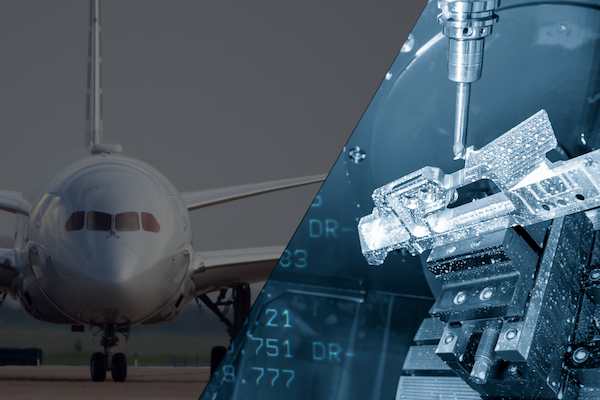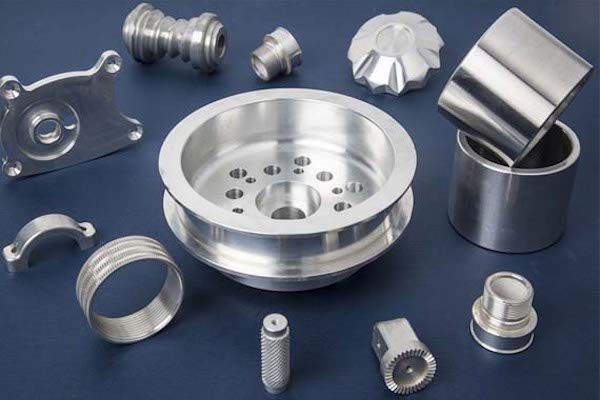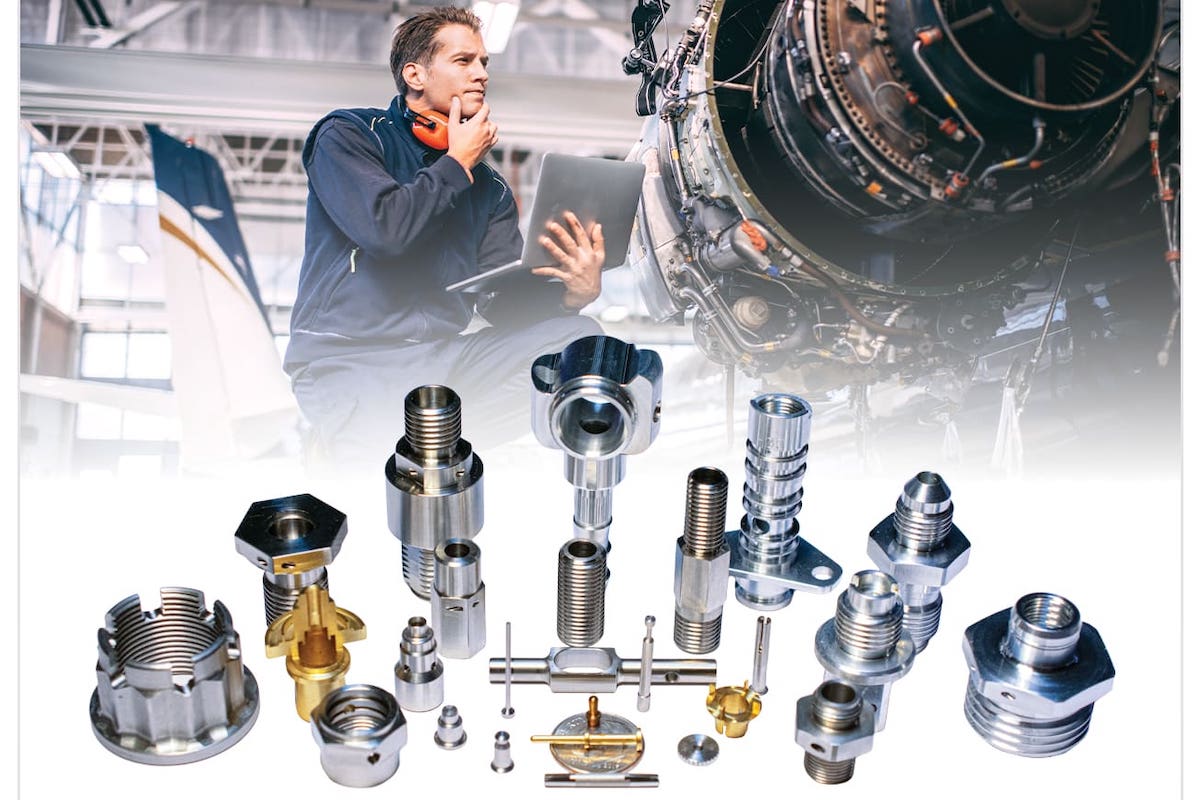Introduction:
In the aerospace world, precision and reliability are literally a matter of life or death. It’s not overstatement to say that the components used in aircraft and spacecraft have to meet the strictest requirements for failure-proof performance. And it’s the relentless pursuit of excellence that drives aerospace manufacturers to track down the best suppliers for their turned components.
At RALLY, we specialize in manufacturing high-precision turned components for the aerospace industry, serving OEMs and Tier 1 suppliers who demand the highest standards of quality and reliability. Our commitment to excellence ensures that every component we produce meets the stringent requirements of the aerospace sector.
Key Takeaways:
- Importance of precision and material quality in aerospace components.
- Overview of our advanced manufacturing processes and quality assurance.
- Applications of turned components in various aerospace systems.
- Reasons to choose us as a trusted aerospace manufacturing partner.
1. Leading Manufacturers of Turned Components for the Aerospace Industry

Aerospace industry needs a few manufacturers who are experts at making high-precision turned parts. Here are a few of them:
Neida: Located in the UK, Neida is a top manufacturer of turned and milled parts for the aerospace industry. They make high-precision parts out of exotic materials to make sure they work great.
Owens Industries: Located in Wisconsin, USA, Owens Industries is a precision CNC machine shop. They make complex parts for the aerospace industry. They make parts for rockets and satellites, which shows they can make parts to the toughest specs.
Rally Machining: RALLY is a top brand in China known for its quality and precision. They’re a top manufacturer of aerospace CNC turning parts. They make parts for airplanes and other aerospace stuff. They set the standard for the industry.
These companies do a lot of things, like CNC turning, milling, and machining. They make high-precision parts that meet the tough specs of the aerospace industry.
2. Common Aerospace Components
The aerospace industry relies on a wide array of specialized components that ensure the safety, efficiency, and performance of aircraft and spacecraft. These components must adhere to stringent quality and precision standards due to the demanding environments in which they operate. Below are some of the most common aerospace components:
| Category | Components | Description |
|---|---|---|
| Engine Parts | Turbine Blades | Vital for propulsion, withstands extreme temperatures and stress |
| Compressor Discs | Key for jet engines, requiring high strength and precision | |
| Fuel Injectors | Essential for efficient combustion, delivering correct fuel amount | |
| Landing Gear Components | Struts | Provides structural support during landing and taxiing |
| Brakes | Crucial for safely slowing down the aircraft upon landing | |
| Wheels | Designed to handle weight and impact during landing and takeoff | |
| Flight Control Surfaces | Ailerons | Control aircraft roll, crucial for maneuverability |
| Rudders | Manage aircraft yaw, aiding in directional control | |
| Elevators | Adjust aircraft pitch, influencing ascent and descent | |
| Fuselage Components | Frames | Provide structural integrity to the aircraft’s body |
| Skin Panels | Form the outer surface of the fuselage, lightweight and strong | |
| Stringers | Reinforce fuselage structure, ensuring it withstands various loads |

| Category | Components | Description |
|---|---|---|
| Avionics and Electrical | Circuit Boards | Integral for aircraft electronics and control systems |
| Sensors | Provide crucial data on altitude, speed, temperature, etc. | |
| Connectors and Wiring | Ensure reliable electrical connections throughout the aircraft | |
| Hydraulic and Pneumatic | Actuators | Convert pressure into mechanical movement, essential for operating flight controls |
| Pumps and Valves | Regulate fluid and gas flow within aircraft systems | |
| Structural Fasteners | Bolts and Screws | Ensure secure assembly of aircraft components |
| Rivets | Commonly used in fuselage and wing assembly for reliability and strength | |
| Clamps and Brackets | Support and hold various systems and components in place | |
| Composite Materials | Panels and Fairings | Made from advanced composites to reduce weight while maintaining strength |
| Sandwich Structures | Used in areas requiring high strength-to-weight ratios, such as wings and tail sections |
3. Why Turned Components are Crucial in Aerospace
Precision and Reliability
In the aerospace industry, the margin for error is virtually nonexistent. Turned components, which are meticulously crafted using advanced machining techniques, offer unparalleled precision. This precision ensures that every part fits perfectly and functions as intended, contributing to the overall reliability of the aircraft.
Reliable components are critical for the safety and performance of aerospace vehicles, as even the slightest deviation can lead to significant issues. Our turned components meet stringent aerospace standards, providing the reliability that manufacturers and engineers depend on.
Material Selection and Quality Control
The selection of materials in aerospace applications is vital due to the demanding environments these components must withstand. High-strength, lightweight materials such as titanium, aluminum alloys, and stainless steel are commonly used to ensure durability and performance. Our rigorous quality control processes include thorough inspections and testing at every stage of production.
This ensures that every turned component not only meets but exceeds industry standards. By combining the best materials with stringent quality control, we deliver components that enhance the safety, efficiency, and longevity of aerospace systems.
Get Your CNC Parts Into Production Today
Your Global Partner for Quality CNC Machining Services in China!
4. The Aerospace Manufacturing Process
Research and Development
The process begins with extensive research and development, where engineers and scientists determine the requirements for new aircraft or spacecraft. This phase involves thorough investigation to understand the necessary innovations and technologies.
Design and Engineering
Next, detailed design and engineering take place. This involves creating precise drawings and plans for the systems and components, ensuring every aspect is meticulously planned and aligned with the project’s goals.
Prototyping
Following design, prototypes are created and rigorously tested to verify functionality and safety. This step is crucial for identifying any issues and making necessary adjustments before full-scale production.
Production
The final stage is production, where the actual components are manufactured using advanced techniques like CNC machining, 3D printing, and laser cutting. These methods ensure high precision and quality.
5. The Aerospace Machining Technology
Aerospace machining technology employs advanced manufacturing techniques to create high-precision components for aircraft and spacecraft. Key methods include:
CNC Machining
Utilizing computer numerical control to achieve high precision in machining parts.
3D Printing (Additive Manufacturing)
Building parts layer by layer from various materials, allowing for complex designs and customization.
Sheet Metal Fabrication
Cutting, bending, and assembling sheet metal into intricate structures.
Lathe Machining
Turning and boring components to precise dimensions for critical applications.
Milling
Using multi-toothed cutters to cut and shape parts with precision.
Precision Grinding
Finishing parts to achieve high surface quality and exact specifications.
These techniques ensure the production of a diverse range of aerospace components with the highest standards of precision, accuracy, and reliability.
6. Benefits of CNC Machining in Aerospace
Unmatched Precision and Accuracy
CNC (Computer Numerical Control) machining offers exceptional precision and accuracy, which is crucial in the aerospace industry where even the slightest deviation can affect performance and safety. The automated nature of CNC machines ensures consistent production quality, maintaining tight tolerances essential for aerospace components.
Versatility in Material Use
CNC machines can handle a wide variety of materials, including high-strength alloys, titanium, aluminum, and composite materials commonly used in aerospace applications. This versatility allows manufacturers to produce a broad range of components tailored to specific performance requirements.
Complex Geometries and Intricate Designs
CNC machining excels in creating complex geometries and intricate designs that are often required in aerospace components. Multi-axis CNC machines can produce parts with detailed features and intricate shapes, enhancing the functionality and integration of aerospace systems.
Advanced Quality Control
CNC machining is integrated with advanced quality control systems that monitor and measure each step of the manufacturing process. This ensures that every component adheres to stringent aerospace standards and specifications, enhancing overall product quality and reliability.
Flexibility and Customization
CNC machining offers high flexibility and customization options, enabling manufacturers to quickly adapt to design changes and produce small batches or prototypes efficiently. This flexibility is particularly beneficial in the aerospace industry, where custom parts and rapid prototyping are often required.
7. Applications of CNC Machining in Aerospace
1. Engine Components
CNC machining is extensively used to produce critical engine components such as turbine blades, casings, and fuel injectors. The precision and accuracy of CNC machining ensure these parts meet the stringent tolerances required for efficient engine performance and reliability. This technology allows for the creation of complex geometries that are essential for optimizing airflow and fuel efficiency in aerospace engines.
2. Structural Parts
CNC machining is vital in manufacturing structural components of aircraft, including fuselage frames, wing ribs, and landing gear components. These parts require high strength and durability, which are achieved through the precise machining of high-strength materials like titanium and aluminum alloys. CNC machining ensures that these structural parts maintain their integrity and performance under the stresses of flight.
3. Avionics Housings
The housings for avionics equipment, such as flight control systems, navigation instruments, and communication devices, are often produced using CNC machining. These housings must protect sensitive electronic components from harsh environmental conditions while maintaining lightweight properties. CNC machining provides the necessary precision to create intricate designs that accommodate electronic components securely.
4. Interior Components
CNC machining is also employed in producing various interior components of aircraft, such as seating frames, overhead bins, and galley fixtures. These parts need to be lightweight, durable, and aesthetically pleasing. CNC machining allows for the production of complex shapes and smooth finishes, ensuring that interior components meet both functional and cosmetic requirements.
5. Prototyping and Custom Parts
Rapid prototyping and the production of custom parts are significant applications of CNC machining in aerospace. Engineers can quickly create prototypes to test new designs and innovations before committing to full-scale production.
This flexibility is crucial for the iterative design process in aerospace development, allowing for adjustments and improvements based on testing and feedback. CNC machining facilitates the production of custom components tailored to specific aircraft models and requirements.
8. Why Choose RALLY as Your Aerospace Partner
8.1 Industry Expertise and Certifications
At RALLY, we pride ourselves on our extensive industry expertise and comprehensive certifications. With years of experience in aerospace manufacturing, our team possesses deep knowledge and understanding of the stringent requirements and standards of the industry.
Our facility is certified to ISO 9001 and AS9100 standards, ensuring that every component we produce meets the highest quality and safety benchmarks. Our commitment to excellence is reflected in our meticulous attention to detail, rigorous quality control processes, and adherence to industry best practices.
By choosing RALLY, you partner with a company that is not only skilled and knowledgeable but also dedicated to delivering reliable and superior aerospace components.
8.2 Customer Support and Custom Solutions
RALLY is committed to providing exceptional customer support and tailored solutions to meet your unique aerospace needs. We understand that every project is different, and we offer personalized services to ensure your specific requirements are met.
Our team works closely with you from the initial consultation through to the final delivery, offering expert guidance and support at every stage. Whether you need custom-designed components, rapid prototyping, or large-scale production, RALLY has the capability and flexibility to deliver.
By choosing RALLY, you benefit from our dedication to customer satisfaction and our ability to provide innovative, custom solutions that drive your success in the aerospace industry.
9. Conclusion
The aerospace industry needs to have really good, precise parts to keep airplanes and spaceships safe and working well. Big companies like Neida, Owens Industries, and Rally Machining know how to make these parts and use the cool stuff they need to make them. With the new things they’re doing with the machines they use to make airplane parts, they’re ready for what’s coming in the future.
To learn more about Rally Machining and the stuff they do with CNC machines, go to: www.rallymachining.com
Work with RALLY for CNC Machining Parts
Request a quote for new project today! No minimum order quantity and free samples available!







